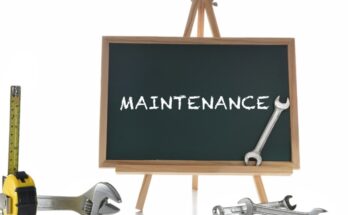Small and medium enterprises (SMEs) play a pivotal role in contributing to domestic economic growth. They are responsible for almost 40% of total exports and account for approximately 45% of the industrial output.
SMEs often are unable to grow or expand due to a lack of funds. Traditionally, formal lending was unavailable for the SMEs, exposing them to the atrocities of informal lenders.
Fortunately, institutions now provide business loans to SMEs, which enables them to expand their ventures. SMEs need to repay this amount in Equated Monthly Installments (EMIs), making it easier to plan their finances. The entire application procedure is simple and quick. Here are a few benefits of such loans:
- Low processing fees
- Nominal SME loan interest rates
- Flexible repayment tenure
- Higher loan amount
This type of funding option offers numerous advantages. However, here are five common mistakes you must avoid while applying for an SME loan:
- No proper business plan
Several SMEs do not clearly foresee the long-term, and owners are unsure about how to utilize the funds. A business plan outlining the future growth considering various economic, environmental, and sociological factors is necessary before applying for the loan. A detailed projection assures the lenders about your seriousness and makes it easier for them to invest their funds in your business.
- Unclear about the loan amount
Often, small business owners underestimate the capital requirements, which results in the under-funding of important projects. Conversely, if you over-estimate the capital requirement, you may avail of a higher loan. This means you pay a higher EMI and interest while not utilizing the entire loan amount. A comprehensive business plan will help you to accurately determine the capital requirements of the business.
- Insufficient financial data
When you apply for SME or MSME loan (micro, small, and medium enterprises), the lender will require your past financial data to evaluate your business’ performance. You must provide them with the correct accounting data. A profit and loss account and a balance sheet capturing the information are necessary to avoid the rejection of your loan application.
- Not checking the credit score
Lenders will often check your personal as well as your business’ credit score to determine your SME loan eligibility. Before you apply for a loan, review the credit report to know your score. Additionally, it will allow you to rectify any errors in the report that impacts your credit score.
- Over-dependence of traditional sources
Possibly, you may approach your bank to apply for a business loan. However, several other options, such as non-banking finance companies (NBFCs) like Mahindra Finance, government schemes, and equity financing are available. You must analyze the various choices at hand to find the best lender. Many non-banking lenders offer higher versatility in structuring the loan. They also provide a reasonable rate of interest. These offerings suit the evolving needs of SMEs in the modern business scenario.
Formal lending is now easier; however, with the multiple available options, opt for a lender that best suits the needs of your business. Check the collateral you are willing to offer against the loan. Ideally, you must offer a business-owned asset instead of a personal one. In addition to the interest, check for other costs like processing charges, pre-payment penalty, and late payment fees. All these additional expenses impact the effective cost of your borrowing.
Avoid these errors and get the funds to take your business to the next level today.




